Contractor Comment: Tractor prices force switch to hiring
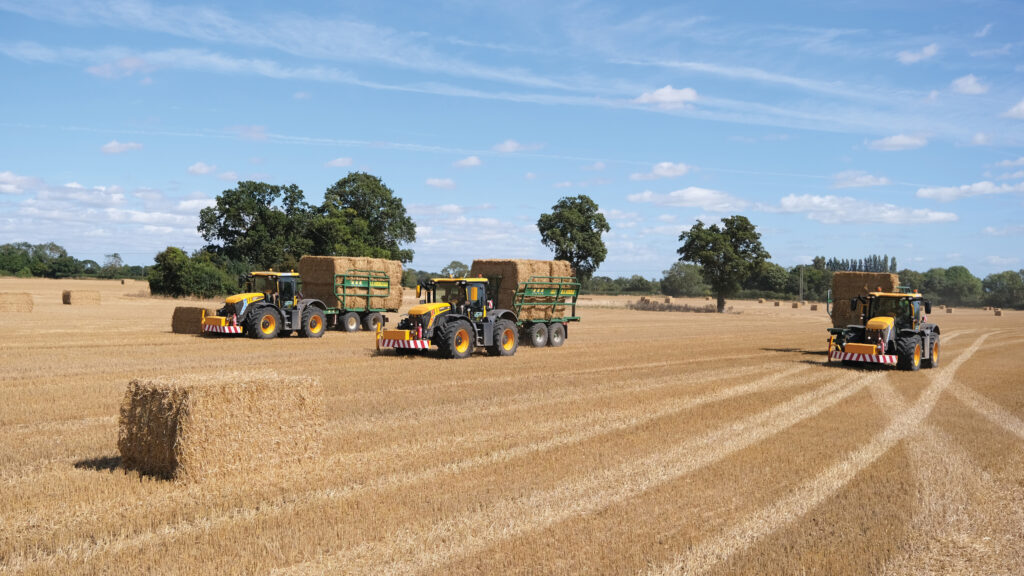 © James Andrews
© James Andrews Eye-watering tractor price inflation threw Derek and Linda Keeble’s purchasing regime into disarray this season, forcing them to re-examine costs and bolster their fleet with costly hire machines.
For years, the most efficient machinery policy for the pair’s large-scale baling operation has been to buy two or three new tractors at the start of each campaign and sell the old ones at the end.
This has allowed them to double tractor numbers for their peak workload, reduce the number they need to hire in and avoid having expensive assets sitting idle all winter.
Not to mention the added benefit of a regularly updated fleet that’s always protected by warranty.
See also: Contractor Comment: Is Covid to blame for kit breakdowns?
But the current inflation of new tractor prices and depreciation of trade-ins has made it financially “laughable” this season – so much so that they’ve had to reassess their operating methods, increasing the number of machines they hire in and buying another second-hand tractor as a back-up.
They spoke to several hire firms and Wiltshire-based SW Hire presented them with the most attractive proposition.
“Unlike some of the companies we called, they were brilliant to deal with, competitive on price, and they didn’t force us to pay silly amounts upfront,” says Linda.
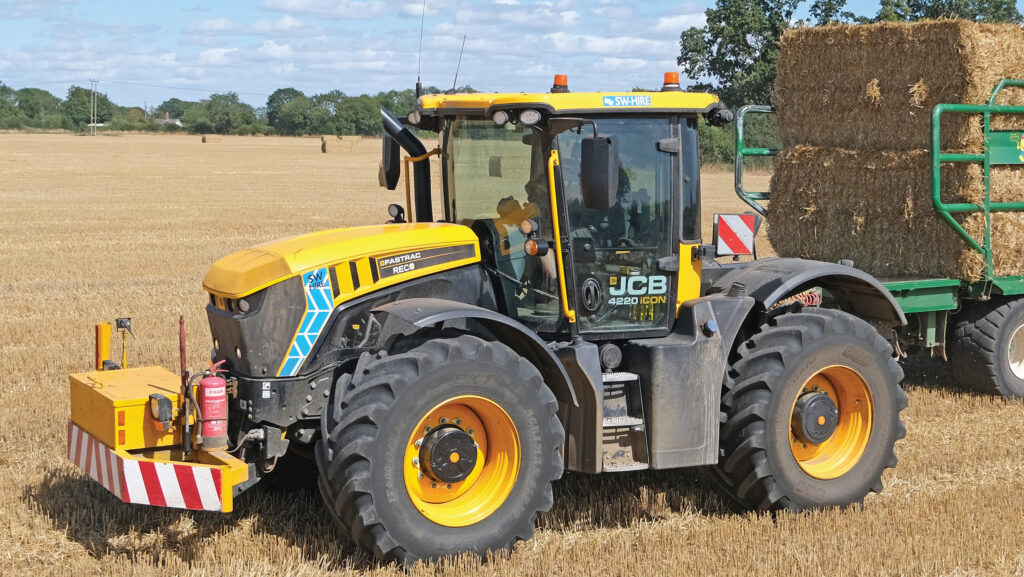
One of the hired Fastracs © James Andrews
Hire costs
But it was still a costly exercise, with each of the three Fastracs setting them back £1,377.50 a week for a minimum 10-week hire period.
On top of this, they took on a Case IH Puma 240 CVX from Doe Power on an eight-week hire – they have a tractor from there most seasons – which added £1,250 a week to their tally.
All in, the total hire bill for the season amounted to £50,000 – a good £40,000 more than usual.
Derek says: “It’s been a hard one to stomach, particularly as the margins in the job are tight at the best of times, but we’d have been a lot more out of pocket if we’d bought. I’m just glad we had the weather to make full use of them all.”
Hard to beat a Fastrac
Other possibilities to save cash on machinery purchases included switching to lower-cost tractors or running older models, but neither of these were particularly attractive options.
“Heavy equipment has made fields rougher than ever, and JCBs are the best tractors we’ve found for ironing out the bumps” says Derek.
“With most of our operators being ‘older’, the thought of a harvest where you’re bounced across tramlines is about as appealing as a two-month-long boxing match.”
As for relying on higher-houred models, with 25,000t of straw to bale and get off fields in a timely fashion, they can’t afford the elevated breakdown risk.
“One main farmer appeal of using our service is our ability to get the job done, so machines that will work well and hard must be our main consideration.”
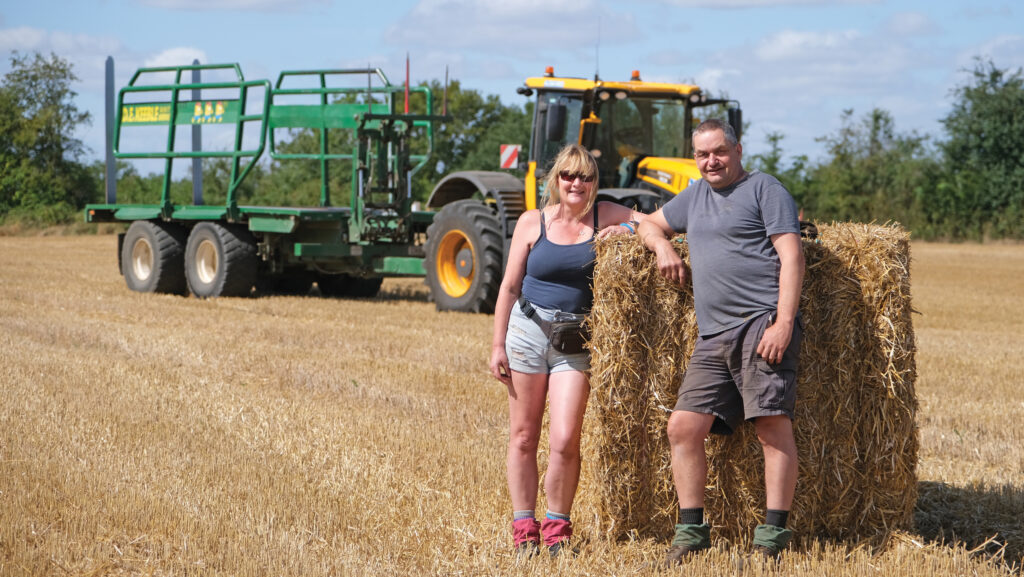
Linda and Derek Keeble © James Andrews
New-to-the-farm Claas Arion
This season’s sole tractor purchase was a 2017 Claas Arion 650 with Hexashift transmission and Cebis controls.
“We used to run a lot of Claas tractors and got on well with them – their cab and front axle give a particularly smooth ride – so we decided to have another,” says Derek.
“It also relieves the need to hire yet another tractor, and we can use it on other jobs through the year.”
Primarily brought in for tedding duties and running their mini Hesston baler (a Massey Ferguson 2250), it cost them £70,000 with 2,800 hours on the clock.
This was £14,000 more than one they’d seen sold a few months earlier at a farm sale, but it came through main dealer Manns from Claas Easton, it had been given a thorough service and has a warranty until Christmas.
Derek says: “Reading this, it might sound like we paid over the odds, but you’ve got no idea what you’re letting yourself in for when buying at a sale, and you don’t need much of a breakdown to rack up a £14,000 bill these days. Manns’ backup is also particularly good.”
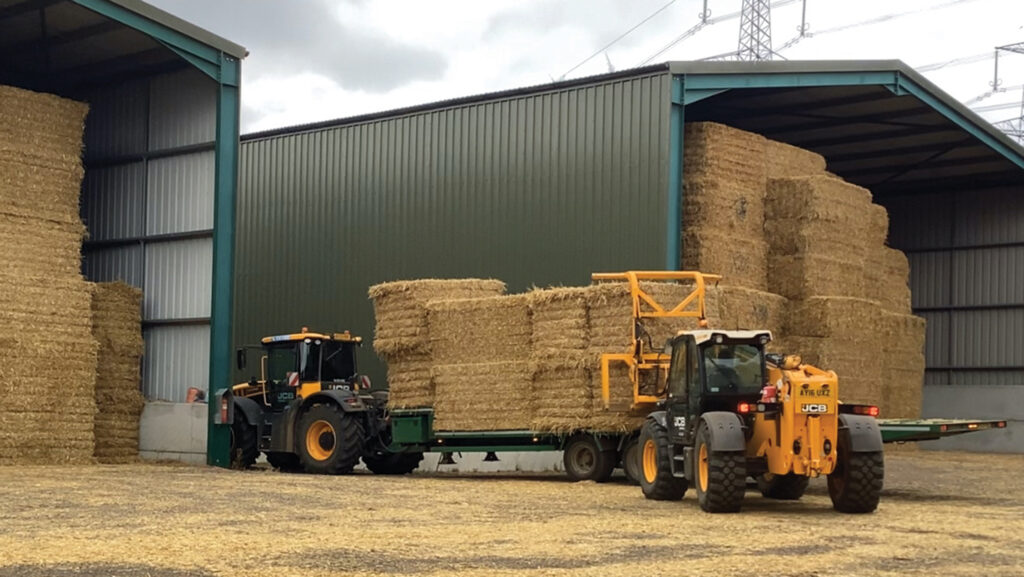
© James Andrews
Average year for straw
As for this year’s baling onslaught, disappointing winter barley straw yields made for a worrying start and left several of their pig customers facing a severe shortage.
However, having pulled in an extra 300ha from farms that would normally chop their straw, and finding surprisingly decent yields in most wheat crops, all was put right.
Another unexpected yield booster was a John Deere X9 combine with 45ft flexible draper header that arrived on one of the farms they deal with.
Moulding to ground contours, it gives the field an ultra-close crew cut that upped yields by about 25%.
“The row of straw it leaves behind is something else – it’s so big and dense that our full-size Hesston balers were crawling along at just 3.4kph,” says Derek.
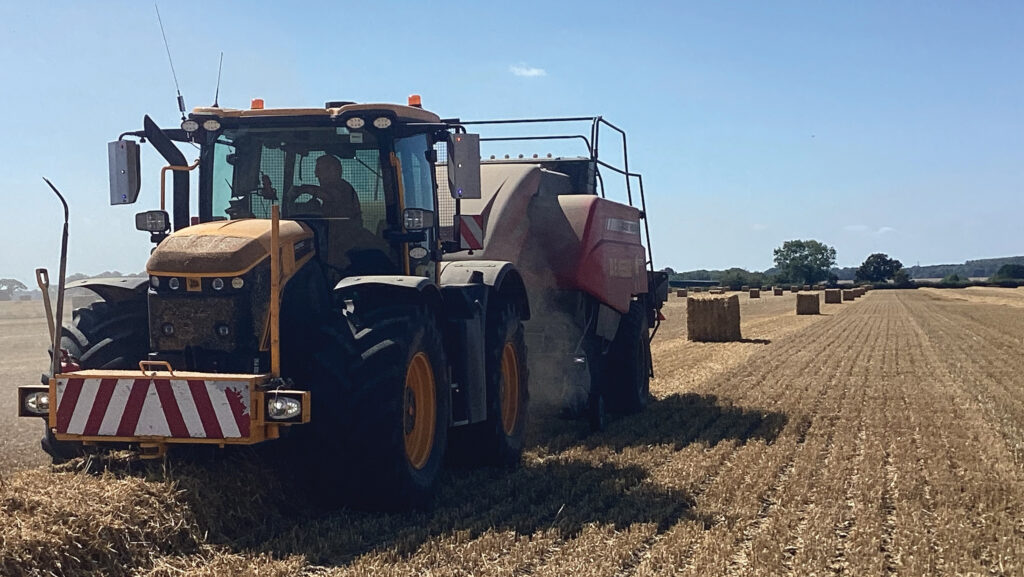
© James Andrews
“Almost every combine development in recent years has been detrimental to straw and baling, so it’s nice that this is a positive one.”
However, in a wet year, Derek reckons this volume of straw and short stubble will present some problems.
“I think the only way we’d be able to dry it is to split the row, something that we’ve done before but is very slow. So, one of this winter’s projects could be modifying a rake to make the rotors spin in the opposite direction, thus opening the swath up.”
Dry straw
Other than a few ominous cloudy skies, the weather played ball in Suffolk, meaning the Keebles had a virtually uninterrupted run to get all their straw in dry.
The only outliers were a couple of customers near the coast for whom sea mist delayed some of their cutting until mid-September.
Despite the relatively straightforward season, Derek and Linda point out that they couldn’t have got through the workload without their experienced team, and the continued help of friendly like-minded contractors, who all worked around the clock to get the job done.
Falling prices
Risk and uncertainty don’t generally factor into Derek and Linda’s business planning, which is why almost all the straw they bale is sold on fixed-price contracts.
As a result, they avoided getting caught out by a brief high-price market, where some people bought expensive straw that will ultimately stand around and go bad.
“Snetterton power station [which runs on biomass] has already thrown a curve ball – it’s gone offline for the next few months, causing a backlog of material and no doubt a suppression in market values,” says Derek.
As for their own balers and chasers, these put in a solid performance, bar a few struggles in particularly dry crops coming out of Case IH Axial Flow machines.
“Rotary combines and hot, humid days are not a good combination for a Hesston,” says Derek.
“You need a bit of moisture to make a decent bale, so in some cases we had to return late in the evening or early morning to get them to work properly.”
The only notable breakdown has been a cracked set of bale density doors on their 2013 Massey Ferguson 2290, partly caused by the need to shut them tight to make dense enough bales in short, dry straw.
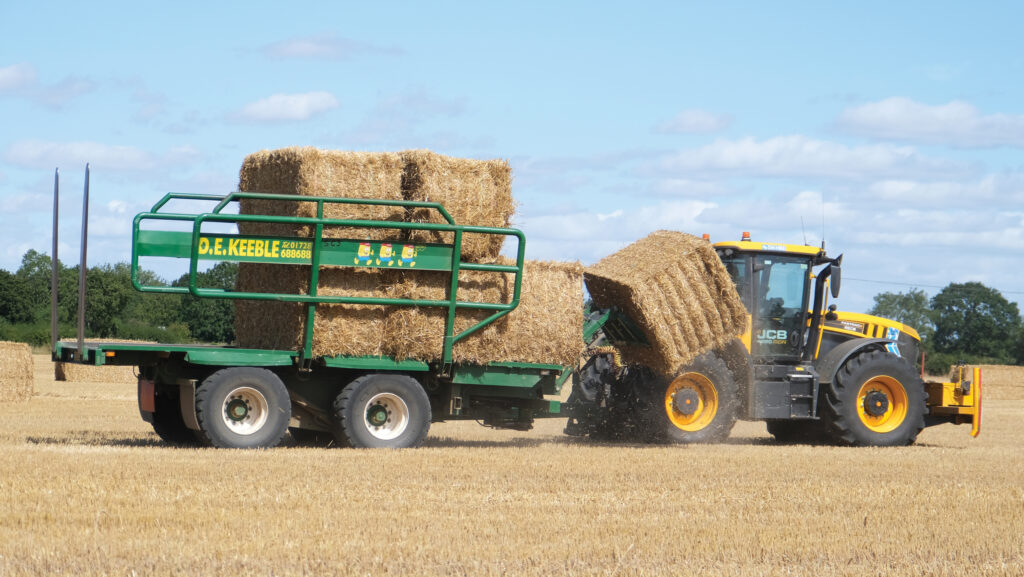
© James Andrews
Thankfully, this was right at the end of the season, meaning very little work time was lost.
Despite being the oldest baler in the fleet, they have no plans to change it. Instead, it will be repaired and strengthened in the workshop over the winter, ready to wade into the 2025 crop.
Unlike tractors, the Keebles are happy to run older balers and chasers. This is because the Hesston-made Massey machines are relatively simple, reliable and built to last.
“Like combines, they only clock a few hundred hours a year, we keep them well maintained and we have more machines than we technically need, should we encounter poor weather or have a breakdown,” says Derek.
Autumn workload
With the harvest season wrapped up, the long job of “musical bales” is now in full swing as thousands of tons of straw is hauled to customers from satellite stacks dotted around the county.
Hedgecutting and coppicing are also kicking off, with the latter being carried out by a home-made grab and saw blade fitted to their 14t Doosan excavator.
Come mid-October, the next wave of straw-based activity will begin, as the modified Larrington spreaders head out to cover carrots, protecting them from frost.

